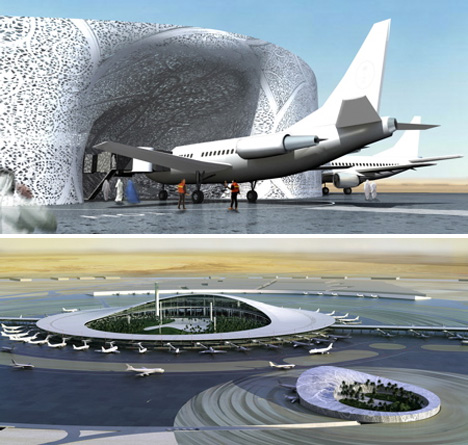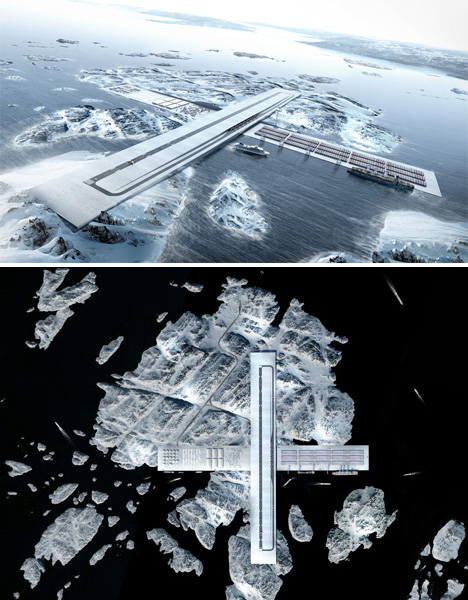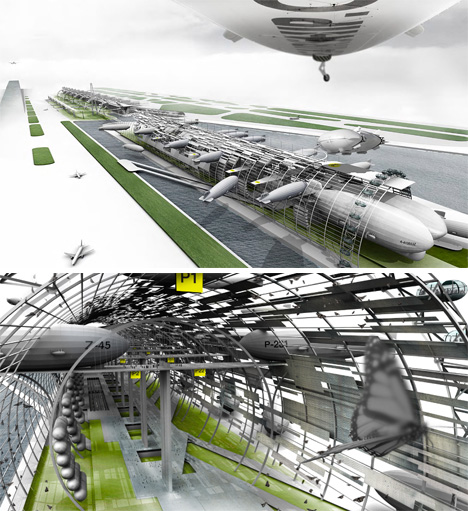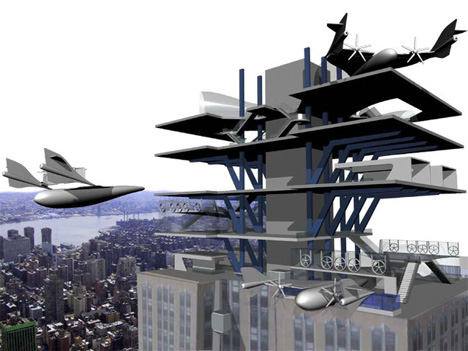Jeddah International Airport by OMA
An intricate lacework facade lets natural light into a special terminal built just for the Saudi Royal Family at this Jeddah international airport concept by Office for Metropolitan Architecture (OMA.) The main terminal is located adjacent to the private royal terminal, and is shaped like a ring with a lush green oasis at its center. The design emphasizes making the departure areas just as beautiful and exciting as the arrivals, “allowing both to benefit from the same spatial conditions.”
AIR+PORT for Greenland
Small snowy islands off the coast of Greenland could serve as the basis for a new combination airport and shipping port. The cross-shaped AIR + PORT concept by BIG and Tegnestuen Nuuk addresses the looming boom in travel to and from this isolated continent due to new shipping routes and increased oil drilling. Currently, Greenland residents are entirely dependent on air traffic for domestic commutes, yet low demand due to the small population makes flights incredibly expensive. The new airport would provide a transit hub between Europe and America, cutting costs for locals.
Self-Sustaining Los Angeles Airport
The runner-up in the Airport of the Future contest imagines a self-sustaining airport for Los Angeles that gets its power from algae grown in nearby farms. Says designer Martin Sztyk, “The individual person can navigate through the immense scale of the Airport of the Future as it is designed to be a simple, self-similar system of arched terminals. The linear-axis of the airport’s design allows for vehicular or pedestrian access. Overall, the Airport of the Future has to embrace the past of commercial flying with new technological advances in flight to make flying enjoyable again.”
Pocket Airports
Coming in third, the Pocket Airports concept by Alenxander Nevarez addresses several futuristic possibilities: hypersonic flight, electric propulsion and vertical take-off landing ability. Adapting to these new technologies could require a total shift in how airports are conceived and built. Pocket Airports are smaller and located throughout any given city, so they’re just as accessible as a subway system and have a smaller environmental impact. They could even be integrated into and on top of existing buildings.



